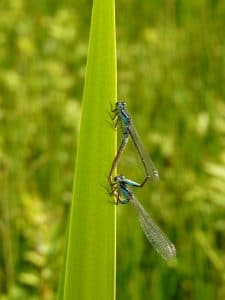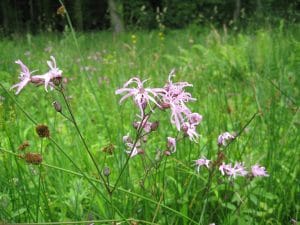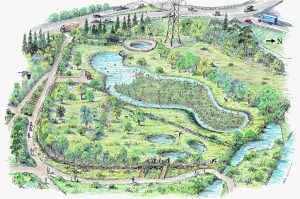
The wetland areas were established with great reedmace, branched bur-reed, soft rush and pond weeds; along with the natural colonisation of species already present. This will benefit a range of species from water plants, insects, bats, birds and mammals. Dragonfly and damselfly species including black tailed skimmers, emperors and large reds colonised the area very quickly.
Regular monitoring of the SuDs system is undertaken to understand the effect that it is having on the water entering the park but also the species that establish in the habitat.

To facilitate the regeneration of the area and to conserve the existing grassland, the topsoil containing the seed bank (the natural store of seeds) was stripped, stored on site and reinstated when the construction work was completed. Following this process, a large variety of wildflowers were recorded including common knapweed, ragged robin, meadowsweet and oxeye daisy which in turn attracted a range of insects and birds.
Native broadleaved trees such as oak, alder buckthorn, hawthorn and hazel were planted throughout the margins of the site and sporadically across the grassland areas recreating the historic parkland, in keeping with Stover’s Historic Parkland status.
Bat, bird and dormice boxes have been erected around the SuDs systems and throughout the park along with habitat piles to encourage invertebrates. The wildlife and boxes are monitored by licenced staff and volunteers to monitor species presence and abundance within the park.
An artist interpretation of the SuDs systems when fully established has been drawn showing Stover’s perceived vision of what the area will look like in approximately 10 years from now. Habitat restoration is a long process and it will be interesting to see the area re-establish itself through careful management.
Detailed ecology plans for both systems can be found below:
